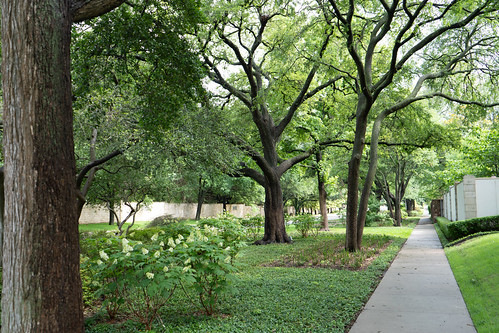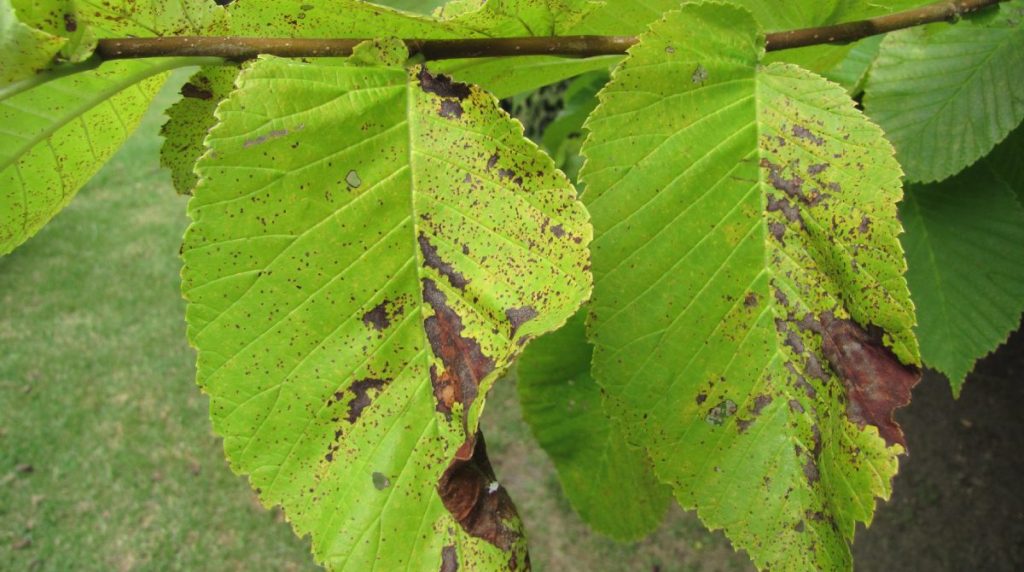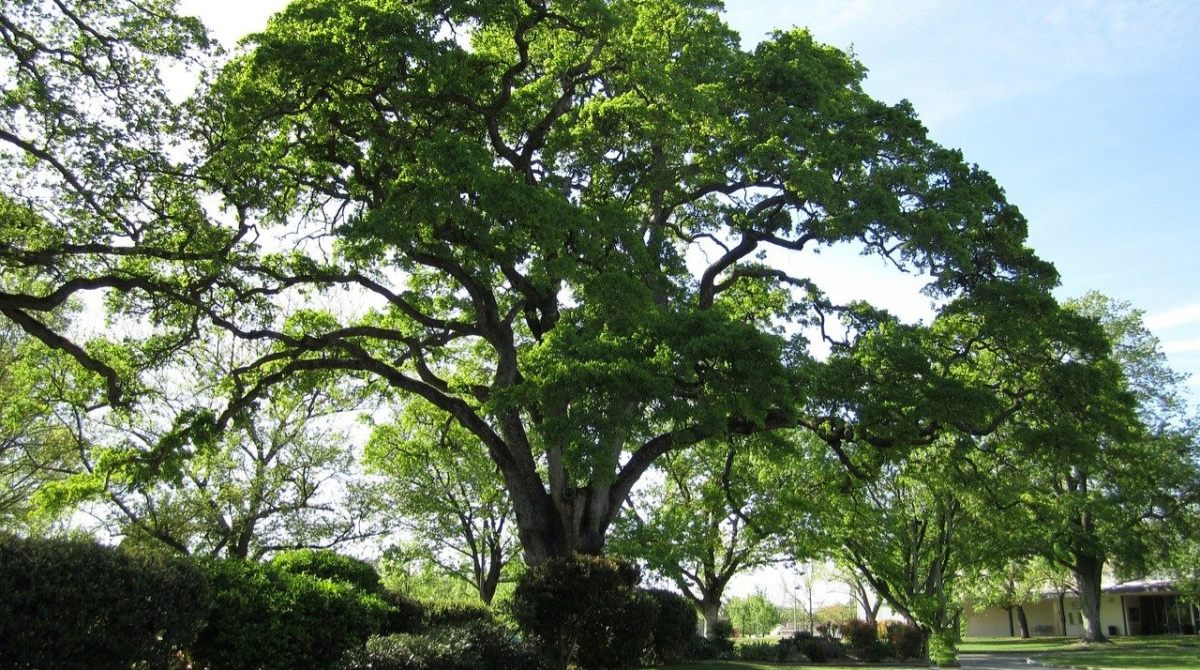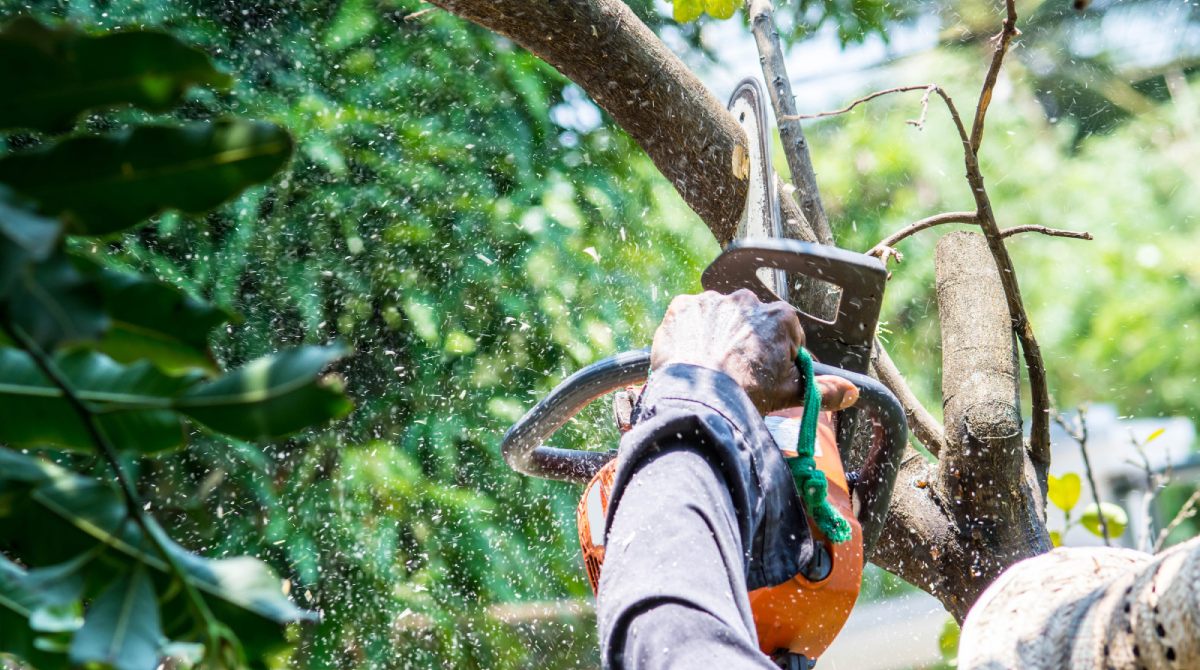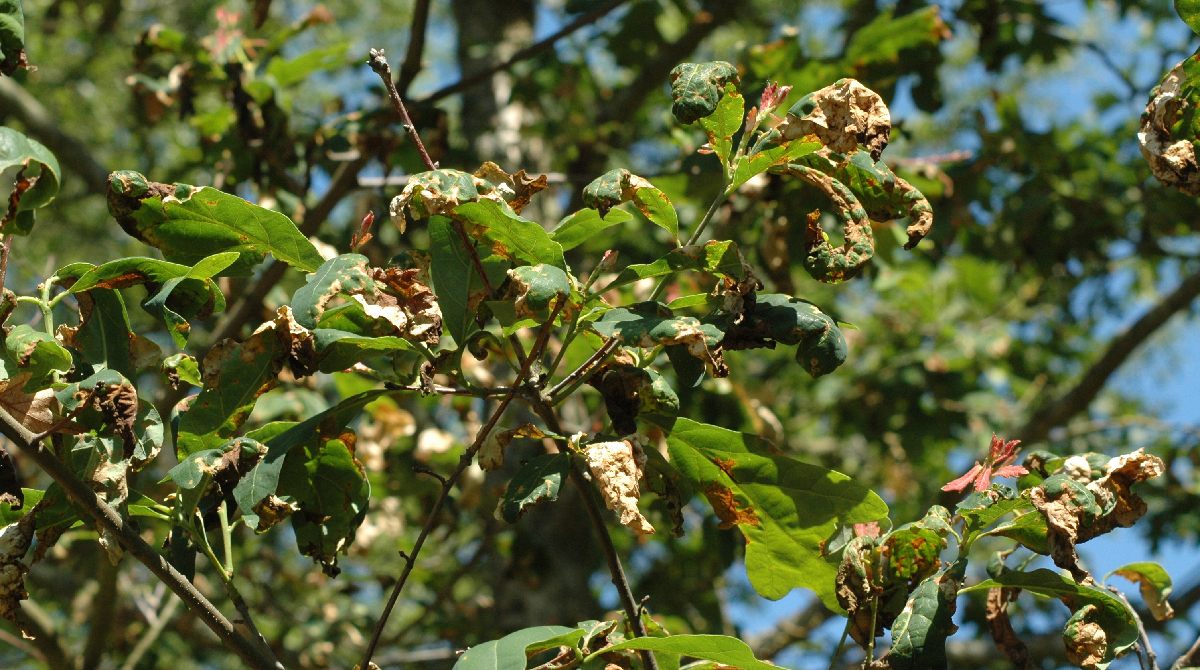
Date October 03, 2022
Category
Anthracnose is a common and deadly tree disease that plagues North Texas during damp and windy weather. This fungal disease spreads quickly, targeting a wide range of deciduous and shade trees native to North Texas. If you live in Dallas/Fort Worth, it’s important to be aware of anthracnose symptoms so you can treat your trees before it’s too late. In this blog post, we’ll explain what anthracnose is, how to spot the symptoms, and how to treat anthracnose fungal disease. We will also discuss tree disease prevention methods to keep your trees safe and healthy year-round. Stay tuned!
What is Anthracnose?
Anthracnose, or Apiognomonia errabunda, describes a group of related fungal diseases affecting North Texas trees. This tree fungus is invasive because the pathogen has a three-way survival capacity, an extensive host range, spreads rapidly, and is highly adaptable to a wide variety of climates. It attacks leaf tissue, causing sunken lesions and cankers on twigs and stems. Over time, anthracnose invades developing plant shoots, buds, and new leaves, causing defoliation, decline, and death.
Anthracnose Symptoms
Anthracnose fungal disease appears as small, irregular yellow or brown spots. Over time, the spots darken and expand, covering leaves. It can kill young twigs, shoots, and new leaves, causing defoliation and significant harm to tree health. If left untreated, anthracnose can lead to the death of your tree. These fungal disease symptoms can mimic other tree diseases like leaf blight, so it’s imperative that you know the cause of your tree sickness before getting the right help. Here are the signs of anthracnose:
- Leaf spots appear as small, irregular yellow or brown
- Light to reddish-brown or purplish-brown dead areas
- Over time the spots darken and enlarge, covering the entire surface of the leaf
- Holes along ribs and veins of leaves
- Cupping and curling leaves
- Early leaf drop
- Dead twigs, shoots, and buds
- Defoliation
Is your tree showing signs of anthracnose? Contact a TreeNewal Dallas tree care specialist at (817) 592-6846 for tree disease management before it’s too late.
What’s the Difference Between Anthracnose and Alternaria Leaf Spot?
Anthracnose can look extremely similar to other fungal tree diseases like Alternaria leaf spots or leaf blights. To tell them apart, Alternaria creates concentric black rings within the spots of infected leaves, and a chlorotic yellow halo often forms around the margins. Anthracnose spots always emerge along the veins on the underside of infected leaves. They can also develop black hair-like projections on the veins of infected tissue.
How Does Anthracnose Spread?
As mentioned earlier, anthracnose fungal disease has a three-way survival capacity. It can survive in a conidial and active mycelium form on twigs, leaves, and buds and in a perithecia form on fallen leaves. Optimal conditions for anthracnose spread are cool, windy, and humid or rainy conditions. In the spring, the fungus produces billions of microscopic spores that spread through splashing rain or irrigation water to new growth, where they germinate and invade nearby trees.
Which North Texas Trees Get Anthracnose?
Anthracnose targets many North Texas shade and deciduous trees, including:
While anthracnose is host specific, the type of anthracnose affecting oak trees is not the same as maple anthracnose. This is one reason why anthracnose tree disease is so deadly and prevalent amongst Dallas native trees.
How to Treat Anthracnose
Healthy, well-maintained trees are usually not at risk of dying from anthracnose fungal disease. However, anthracnose stunts growth for newly planted or stressed trees and can significantly damage tree health. It can also weaken the tree and cause it to become susceptible to a host of other tree diseases and pests in North Texas.
The best anthracnose cure is to keep your trees healthy and well-maintained year-round with routine tree care services so they can fend off this common fungal disease on their own. In severe cases, a professional can apply fungicides at the appropriate times to control this disease.
Anthracnose disease outbreaks are also associated with plants stressed from improper watering, nutrient deficiencies like iron chlorosis, and soil compaction. Mitigating these factors can help your tree recover and resist similar fungal tree disease in the future.
Dallas Tree Disease Management
Worried your tree has or might be susceptible to anthracnose fungal diseases? TreeNewal is here to help. Our experienced ISA Certified Arborists can conduct a tree health assessment to determine the culprit behind your stressed tree and provide a comprehensive treatment plan to restore your tree to optimal health. If you need professional tree care services like tree trimming and pruning, tree nutrition, or insect management, we’ve got you covered there, too.
TreeNewal is a full-service sustainable tree care company offering residential and commercial tree services in Dallas, Argyle, Denton, Fort Worth, Flower Mound, Southlake, and Westlake. Contact our Dallas tree care specialists today at (817) 592-6846 and enjoy tailored tree care advice and the best tree health services in North Texas!
To learn more about North Texas Tree Diseases: What is Anthracnose?, call our Argyle and Southlake-based teams
at (817) 592-6846 or send us a message.
We’re a little different than the average tree services company.
Learn more about TreeNewal’s ISA Certified Arborists!
Our Dallas/Fort Worth-based tree doctors can explain how sustainable tree care services add more value to your bottom line.
Healthy trees, healthy lives.
